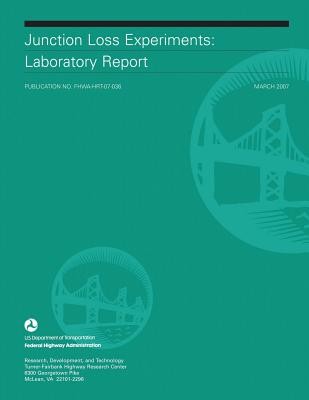
- We will send in 10–14 business days.
- Author: Federal Highway Administration
- Publisher: CreateSpace Independent Publishing Platform
- Year: 2015
- Pages: 68
- ISBN-10: 1508836353
- ISBN-13: 9781508836353
- Format: 21.6 x 27.9 x 0.4 cm, softcover
- Language: English
- SAVE -10% with code: EXTRA
Reviews
Description
Storm drains generally collect storm runoff from streets, parking lots, and other structures and convey this water to a desired outfall. Access holes (or manholes), which allow staff to inspect, maintain, or repair a segment of the drainage, are usually spaced about 92 to 183 meters (m) (300 to 600 feet (ft)) apart along a given pipe and at every junction between multiple pipes. An access hole, which has at least one inlet pipe and one outlet pipe intersecting it, is usually constructed from a vertically oriented concrete pipe or box that is large enough for a person to enter by removing the cast iron lid and using a ladder. In addition to allowing access, access hole junctions also allow pipes to easily change one or more variables: direction, slope, diameter, and elevation. Estimating the energy loss associated with these access hole junctions is a critical step in designing a drainage network that can handle the incoming flow from various storm events. A preliminary method for determining such losses, based on early results from that study, was published in the Federal Highway Administration's (FHWA) Urban Drainage Design Manual (Hydraulic Engineering Circular No. 22 (HEC 22)). This report summarizes the additional experiments and the data collected and used to evaluate the new junction loss methodology.
EXTRA 10 % discount with code: EXTRA
The promotion ends in 20d.10:10:03
The discount code is valid when purchasing from 10 €. Discounts do not stack.
- Author: Federal Highway Administration
- Publisher: CreateSpace Independent Publishing Platform
- Year: 2015
- Pages: 68
- ISBN-10: 1508836353
- ISBN-13: 9781508836353
- Format: 21.6 x 27.9 x 0.4 cm, softcover
- Language: English English
Storm drains generally collect storm runoff from streets, parking lots, and other structures and convey this water to a desired outfall. Access holes (or manholes), which allow staff to inspect, maintain, or repair a segment of the drainage, are usually spaced about 92 to 183 meters (m) (300 to 600 feet (ft)) apart along a given pipe and at every junction between multiple pipes. An access hole, which has at least one inlet pipe and one outlet pipe intersecting it, is usually constructed from a vertically oriented concrete pipe or box that is large enough for a person to enter by removing the cast iron lid and using a ladder. In addition to allowing access, access hole junctions also allow pipes to easily change one or more variables: direction, slope, diameter, and elevation. Estimating the energy loss associated with these access hole junctions is a critical step in designing a drainage network that can handle the incoming flow from various storm events. A preliminary method for determining such losses, based on early results from that study, was published in the Federal Highway Administration's (FHWA) Urban Drainage Design Manual (Hydraulic Engineering Circular No. 22 (HEC 22)). This report summarizes the additional experiments and the data collected and used to evaluate the new junction loss methodology.


Reviews